25 Buildings to See in San Francisco
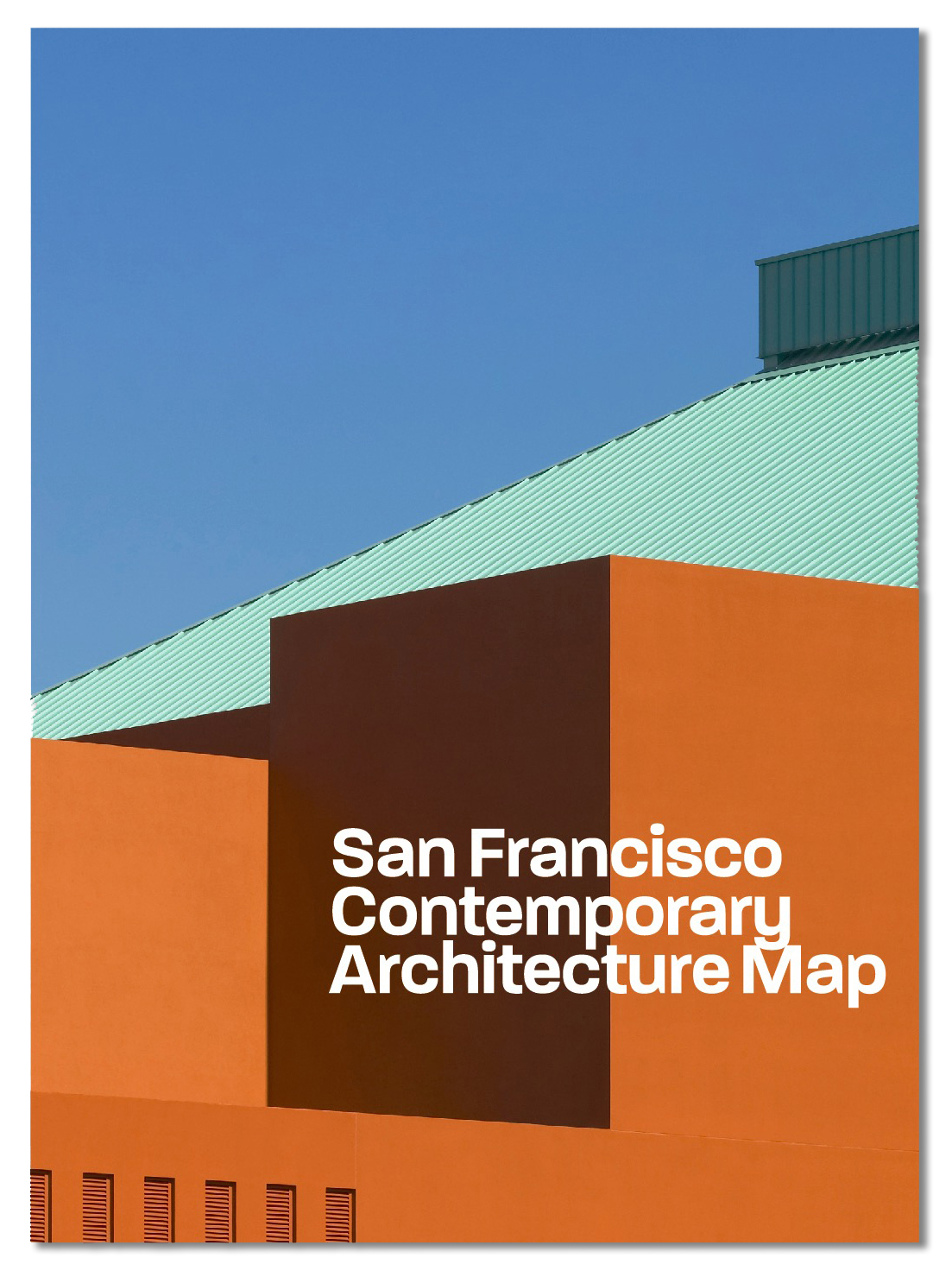 San Francisco Contemporary Architecture Map is our guide to the Bay Area's late 20th and early 21st-century architecture from 1980 to 2025, edited by Mitchell Schwarzer, Professor of Architectural History, chair of the Department of Visual Studies at California College of the Arts, and author of many books about architecture. This limited-edition two-sided guide was produced in collaboration with Blue Crow Media and is available to purchase in support of AIASF. It is a perfect companion for a tour or to frame on your wall.
San Francisco Contemporary Architecture Map is our guide to the Bay Area's late 20th and early 21st-century architecture from 1980 to 2025, edited by Mitchell Schwarzer, Professor of Architectural History, chair of the Department of Visual Studies at California College of the Arts, and author of many books about architecture. This limited-edition two-sided guide was produced in collaboration with Blue Crow Media and is available to purchase in support of AIASF. It is a perfect companion for a tour or to frame on your wall.
From modern skyscrapers to venerable Victorians, San Francisco has some of the most exciting architecture in the world. We list the top 25 as an overview of architecturally significant structures.
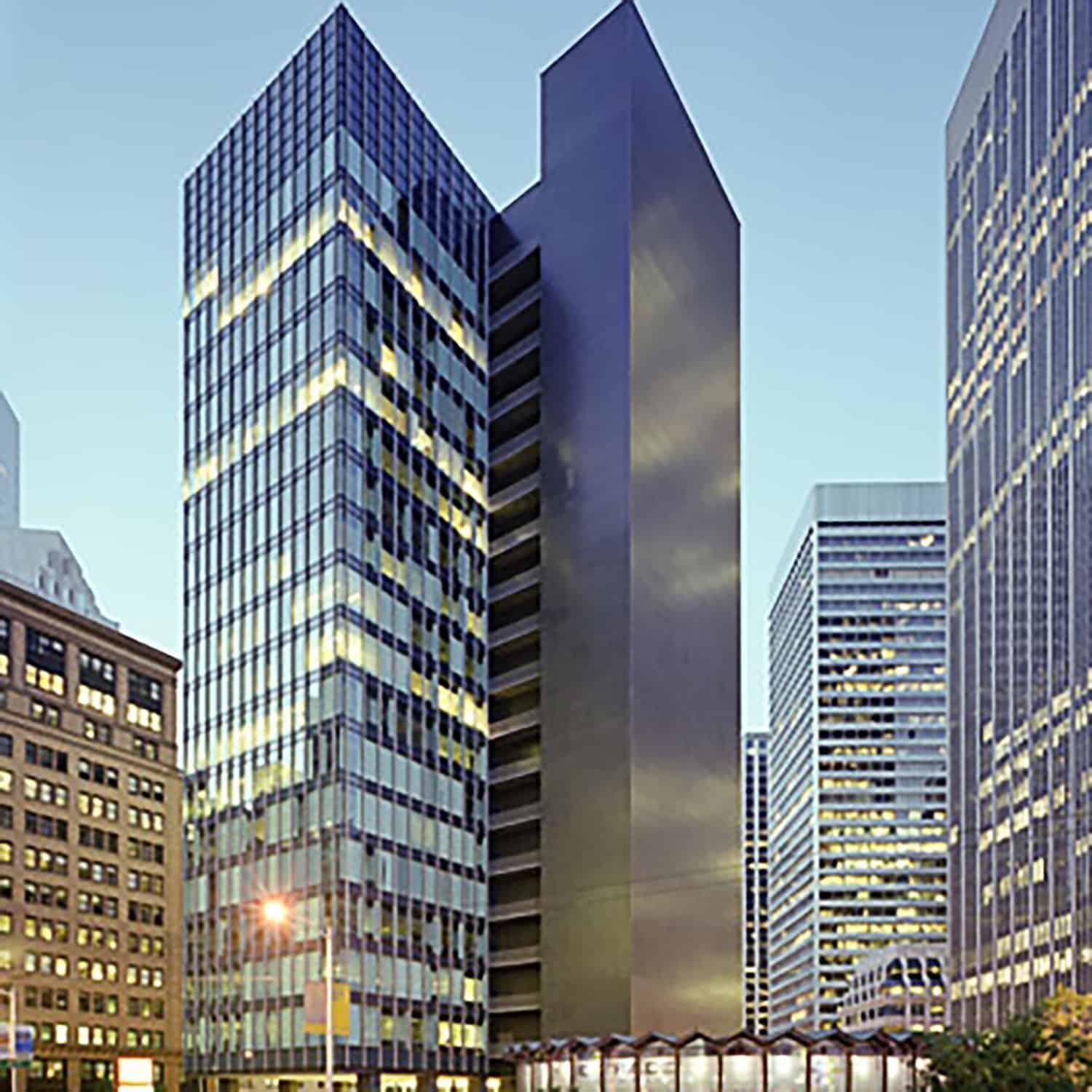
One Bush Street (Former Crown Zellerbach Building)
An example of the early International style, the Financial District office building was designed by Skidmore, Owings & Merrill in 1959 and renovated by Hertzka & Knowles in 1990. The elevator wing is clad with nearly 5 million tiles in shades of gray.
© Keith Baker Photography
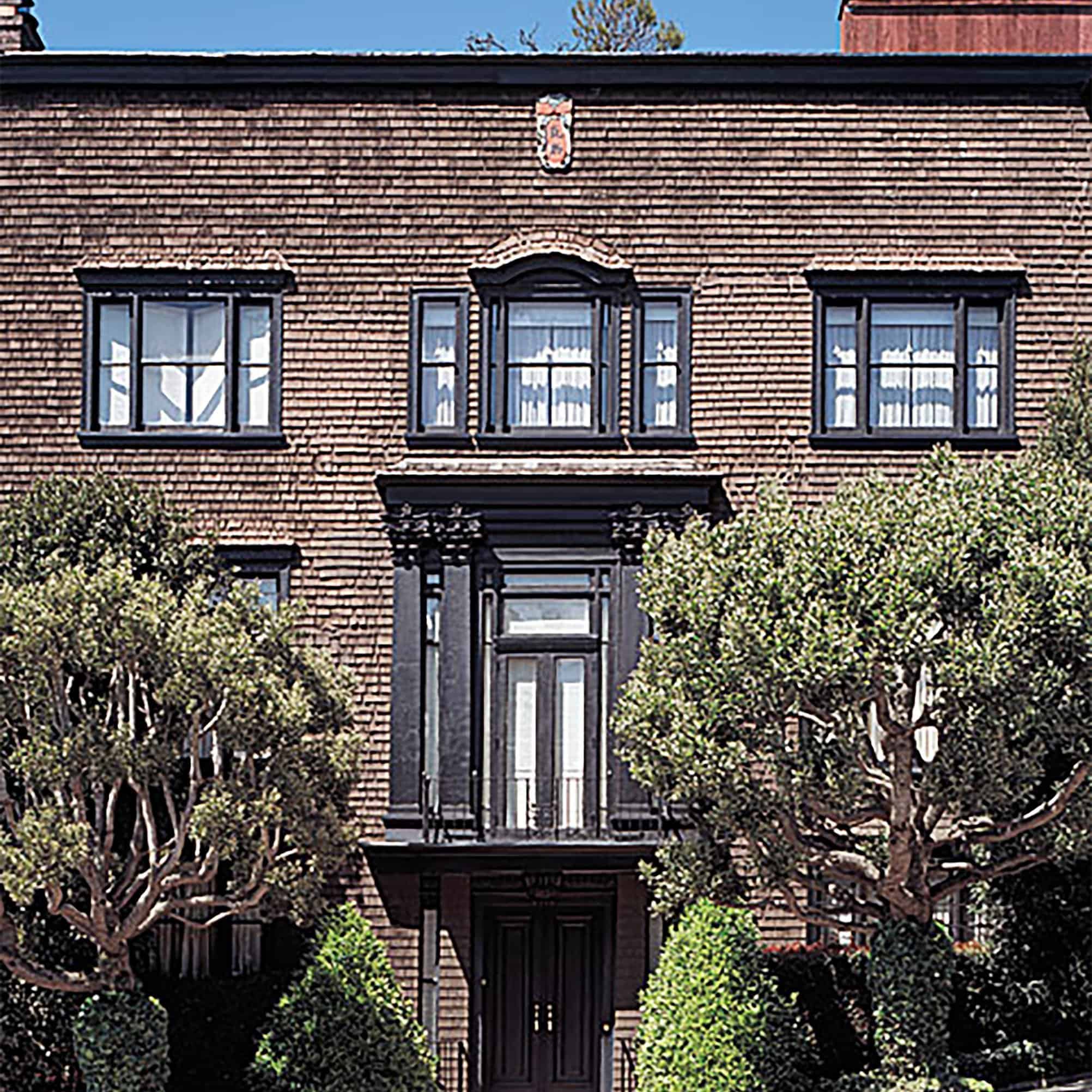
3200 Block of Pacific Avenue
The row of classic shingled houses on this block date from 1900 to 1913, and represent San Francisco’s finest grand mansions. Ernest Coxhead’s 1902 home at 3232 Pacific Avenue has a very unusual balustrade.
© Joe Fletcher
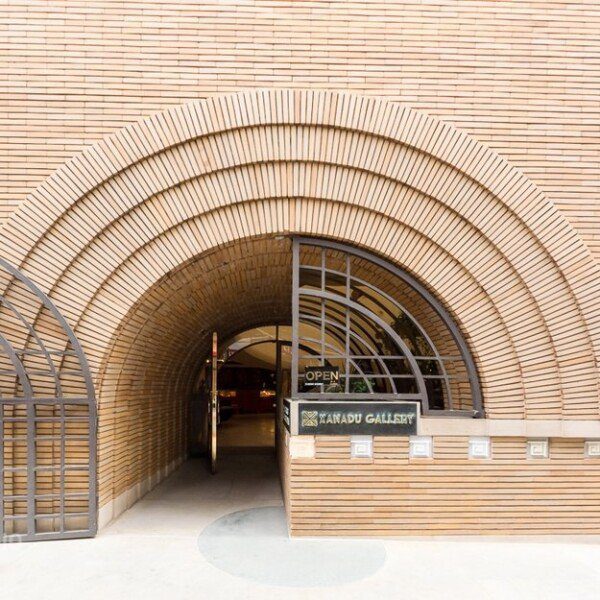
Circle Gallery
140 Maiden Lane
The 1948 Circle Gallery is rumored, to be Frank Lloyd Wright’s prototype for the Guggenheim Museum in New York, and is the architect’s only building in San Francisco. The brick building’s distinctive arched entry is echoed by the curving staircase inside.
© RVC Studio
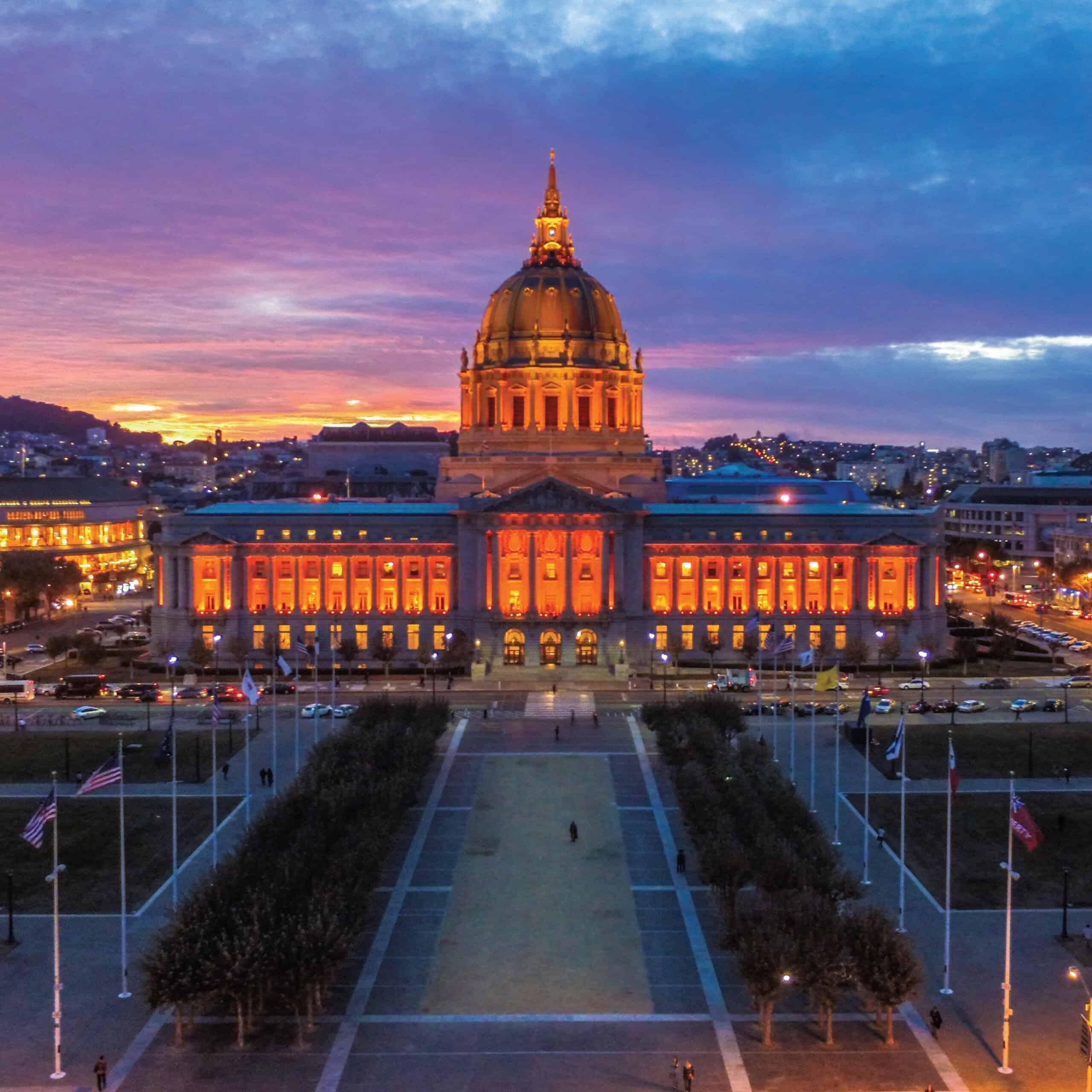
City Hall
1 Dr. Carlton B. Goodlet Place
Part of the “City Beautiful” movement, City Hall was completed in 1915 by Bakewell & Brown and was restored to its former grandeur in the 1990s. The Beaux-Arts building is one of the city’s most elegant structures.
© Beto Lopez
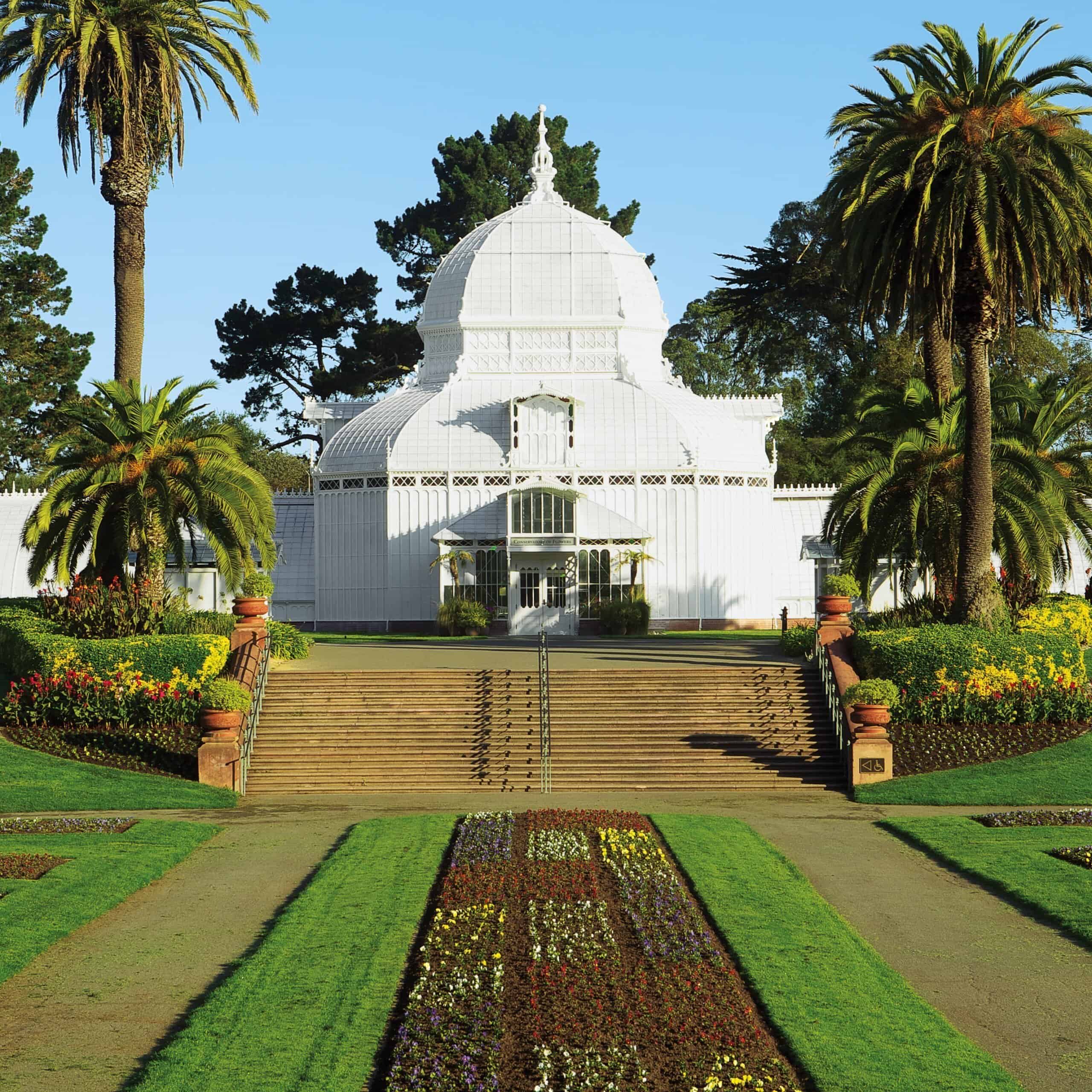
Conservatory of Flowers
Golden Gate Park, 100 John F. Kennedy Dr.
An elaborate Victorian greenhouse that dates back to 1878, the Conservatory of Flowers houses a large collection of exotic plants under its soaring glass ceilings. The oldest structure in Golden Gate Park, it was restored in 2003 by Architectural Resources Group.
© David Wakely Photography
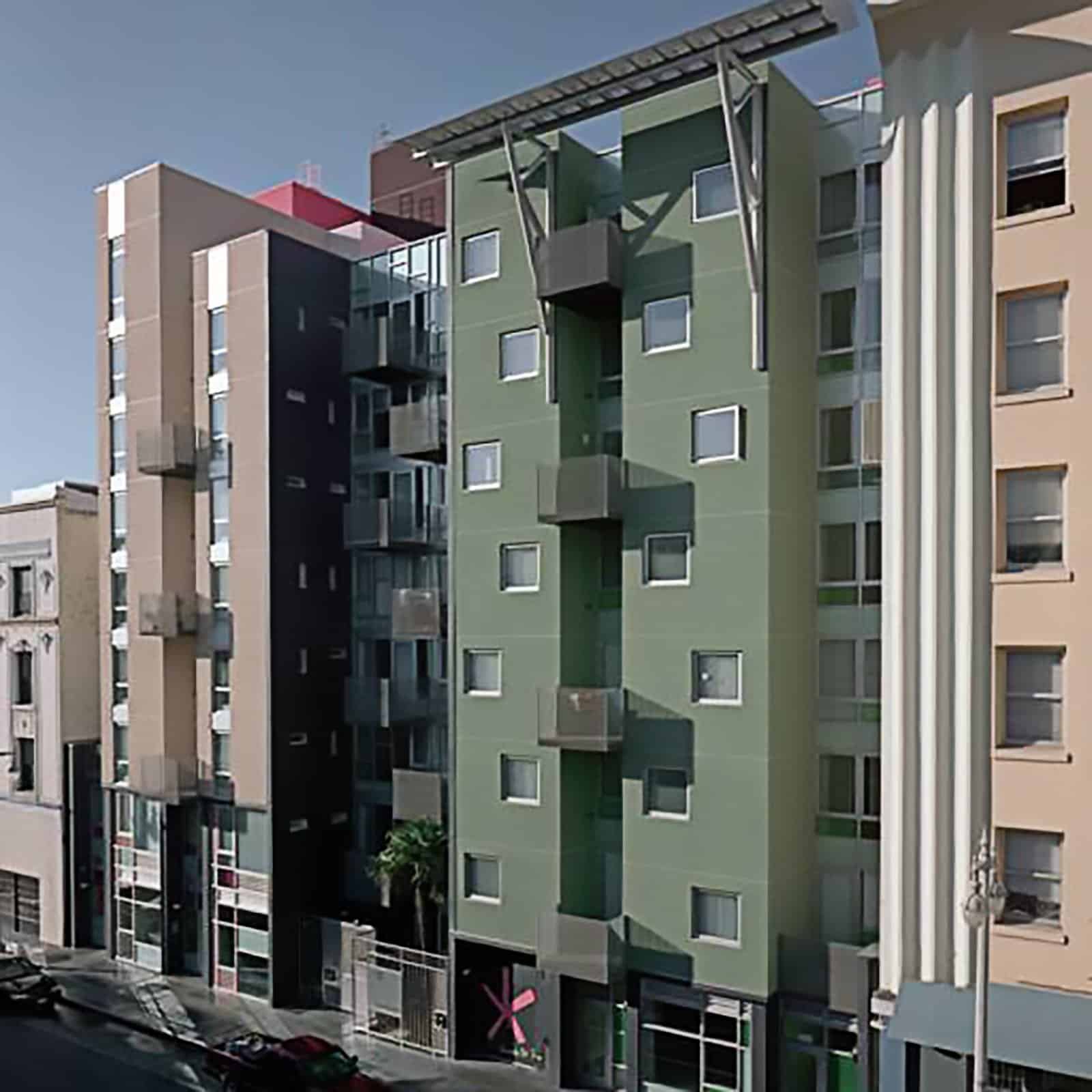
Curran House
145 Taylor St.
The gritty Tenderloin neighborhood is home to Curran House, an affordable family-housing complex built by David Baker + Partners in 2005. The mixed-use project includes retail shops, and the lobby’s glass wall opens into a garden courtyard that offers a respite from the urban surrounds.
© David Wakely Photography
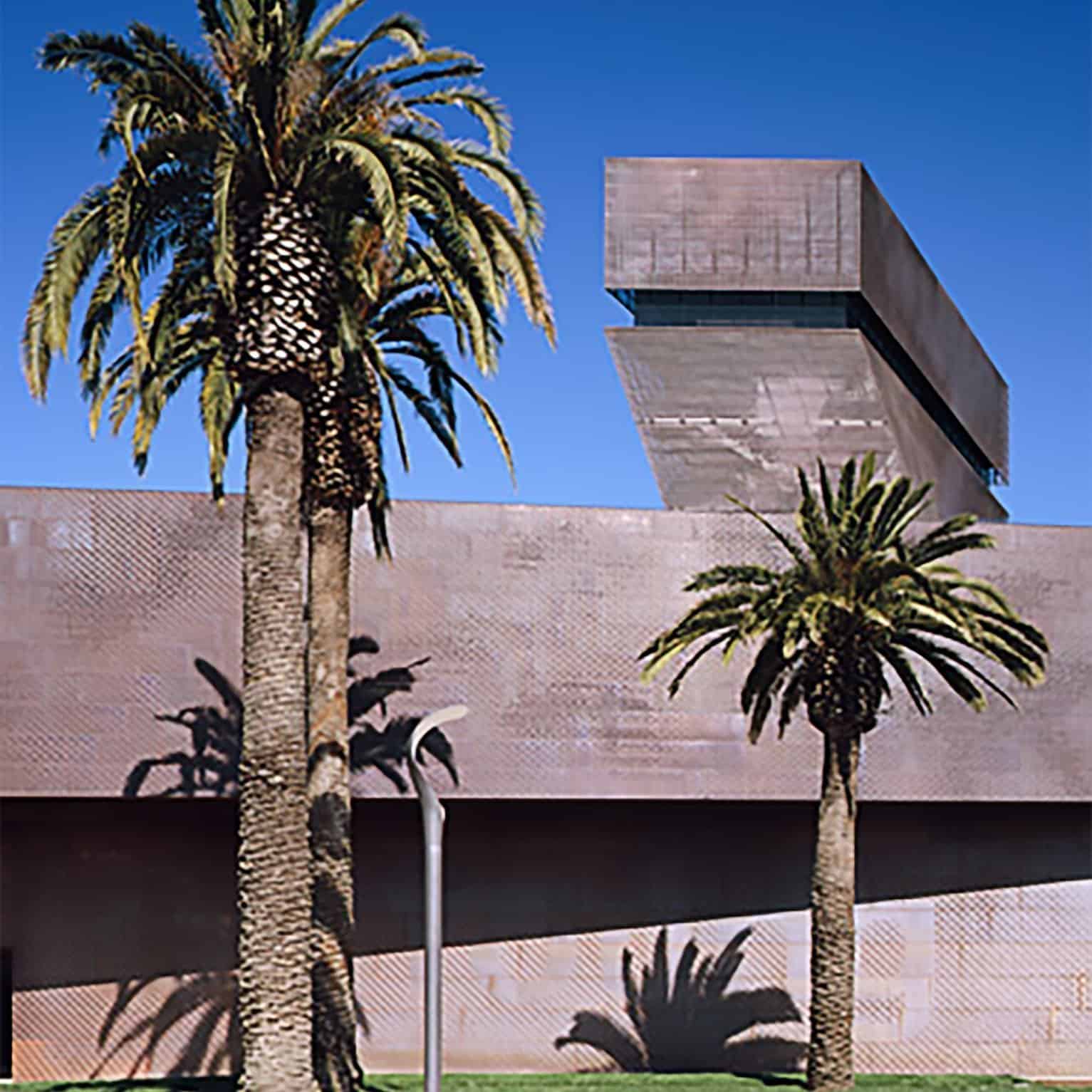
de Young Museum
Golden Gate Park, 50 Hagiwara Tea Garden Dr.
Designed by the renowned Swiss architecture firm Herzog & de Meuron and local firm Fong & Chan Architects in 2005, the new de Young (which replaced the original building damaged in the 1989 earthquake) is clad in copper perforated to mimic dappled sunlight. Its twisting tower provides a breathtaking view of the park.
© Joe Fletcher
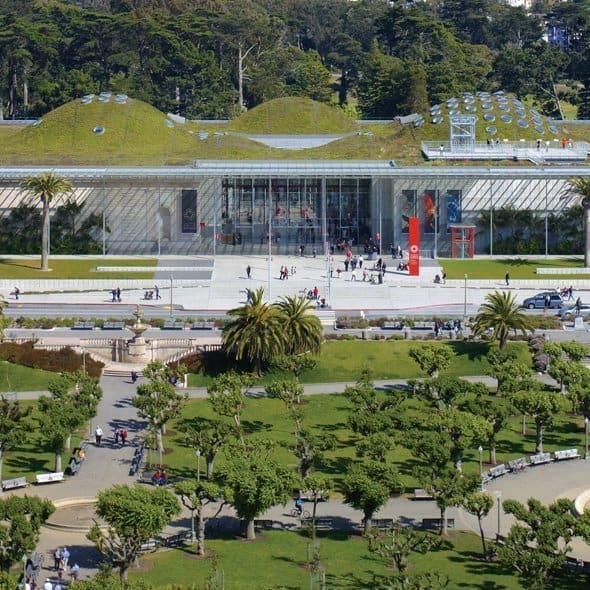
California Academy of Sciences
Golden Gate Park, 55 Music Concourse Dr.
Opened in 2008, the California Academy of Sciences celebrates the natural world and embodies sustainable design with its twin-domed living roof. Designed by Renzo Piano, the building received a LEED Platinum rating.
© Tim Griffith Architectural Photographer
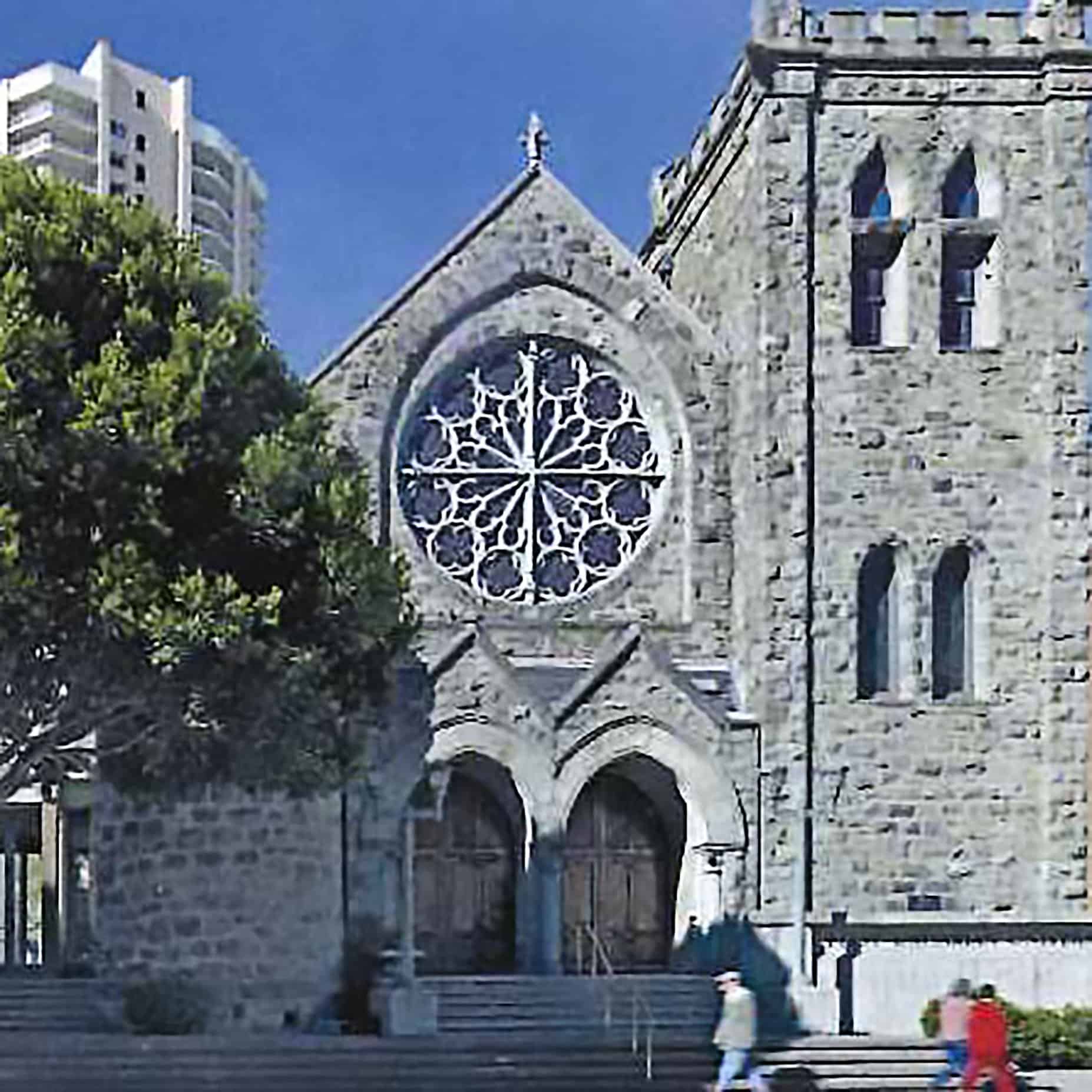
First Unitarian Church
1187 Franklin St.
Designed by George Percy in 1888, the Gothic Revival church features a giant rose window and is complemented by more recent contemporary structures of textured concrete and redwood by Callister Payne & Rosse from 1970.
© Bruce Damonte Photography
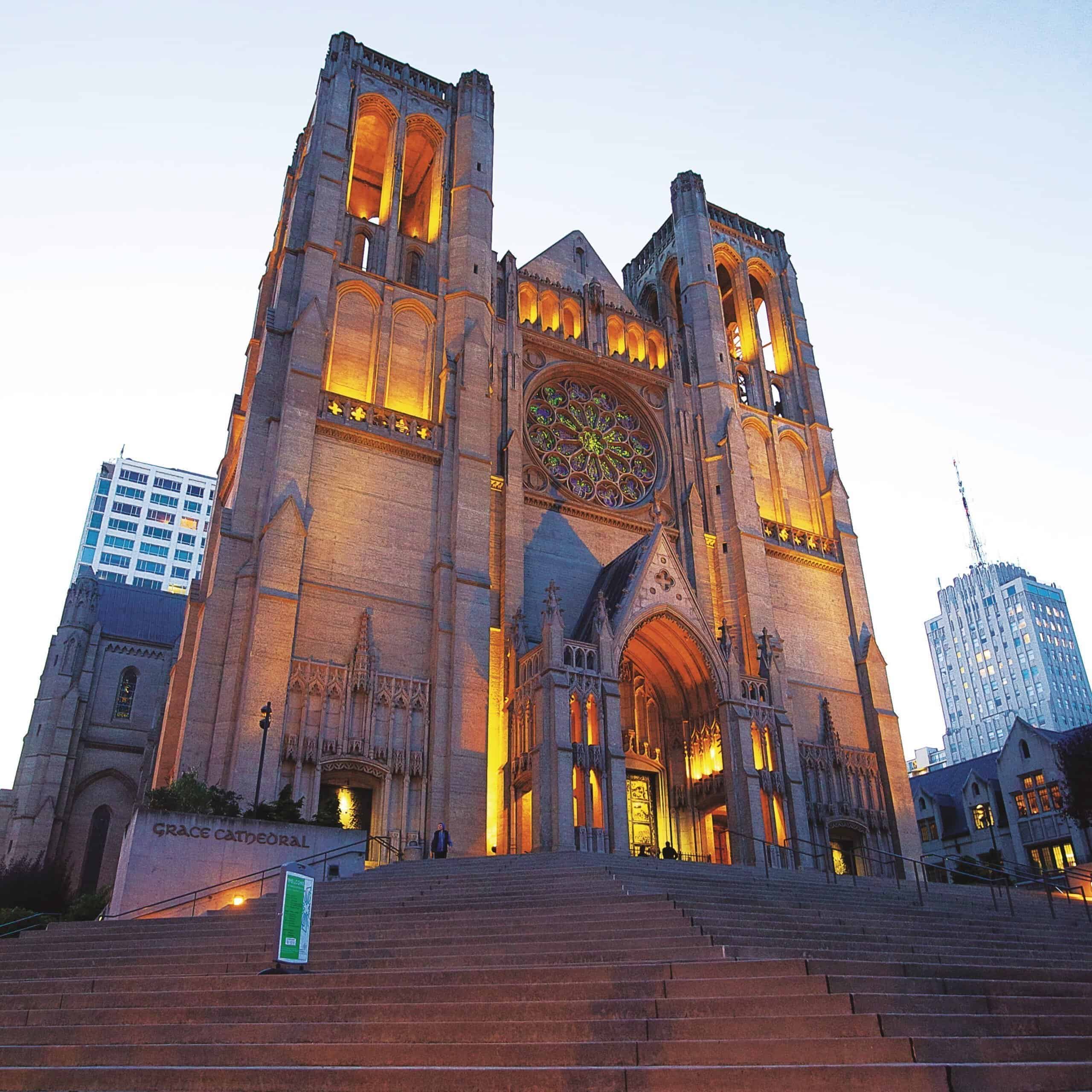
Grace Cathedral
1100 California St.
Perched on the top of Nob Hill, the majestic Gothic form of Grace Cathedral was designed by Lewis Hobart in 1928. Notable elements include bronze doors modeled after Lorenzo Ghiberti’s Gates of Paradise, a floor labyrinth patterned after Chartres and a chapel by AIDS artist Keith Haring.
© San Francisco Travel Association, Scott Chernis
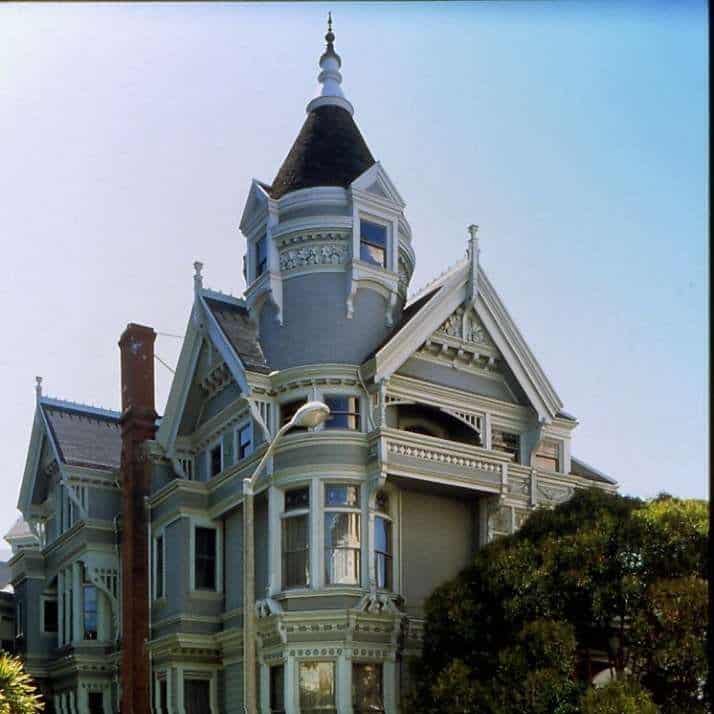
HAAS-Lilienthal House
2007 Franklin St.
The Victorian era lives on in this Queen Anne residence, which has been turned into a museum (open on weekends and Wednesdays). Dating from 1886, the Peter R. Schmidt–designed house is complete with period furnishings and has intricate wooden gables and a circular corner tower.
© Douglas Keister

Hallidie Building
140 Sutter Street
Designed by Willis Polk in 1917, the Hallidie Building is credited as one of the first glass curtain wall buildings in the U.S. Home to the San Francisco chapter of the American Institute of Architects and the Center for Architecture + Design, the building embodies the transition from the old to the new, with ornamental balconies and cornice bordering the wide expanse of glass.
© Takata Photography

JP Morgan Chase Building
560 Mission St.
Cesar Pelli was inspired by the 1917 Hallidie Building in his concept for this office. Pelli’s 2002 version of a curtain-wall building has a distinctive dark green steel frame with extra bands along the lower floors as a decorative flourish.
© Kendall/Heaton Associates
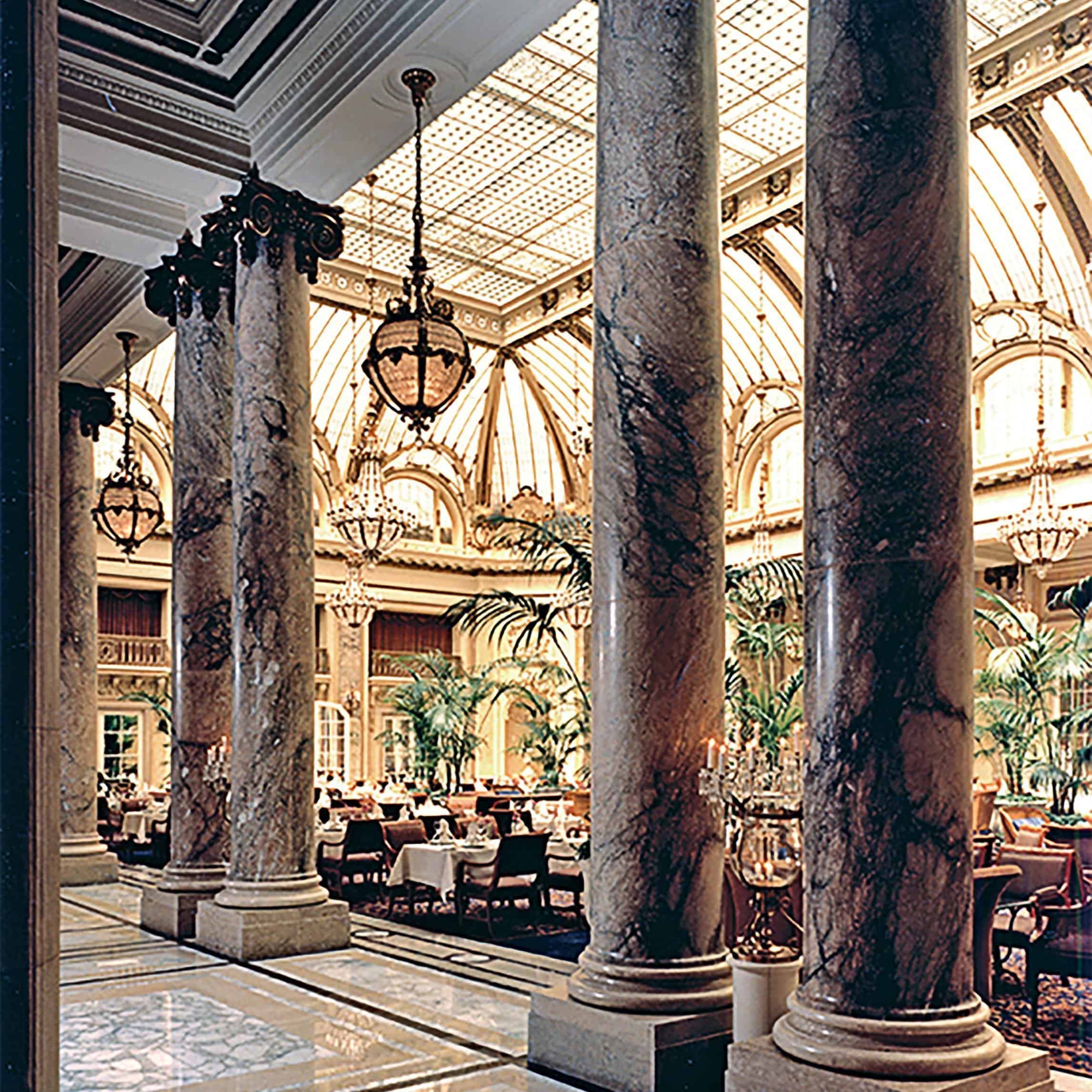
Palace Hotel
2 New Montgomery St.
The 1909 Palace Hotel by Trowbridge and Livingston brings back the opulence of the past. Its famed Garden Court restaurant, with its glorious stained-glass ceiling, was among the spaces restored by Skidmore, Owings & Merrill in 1991.
© SOM + Hedrich Blessing
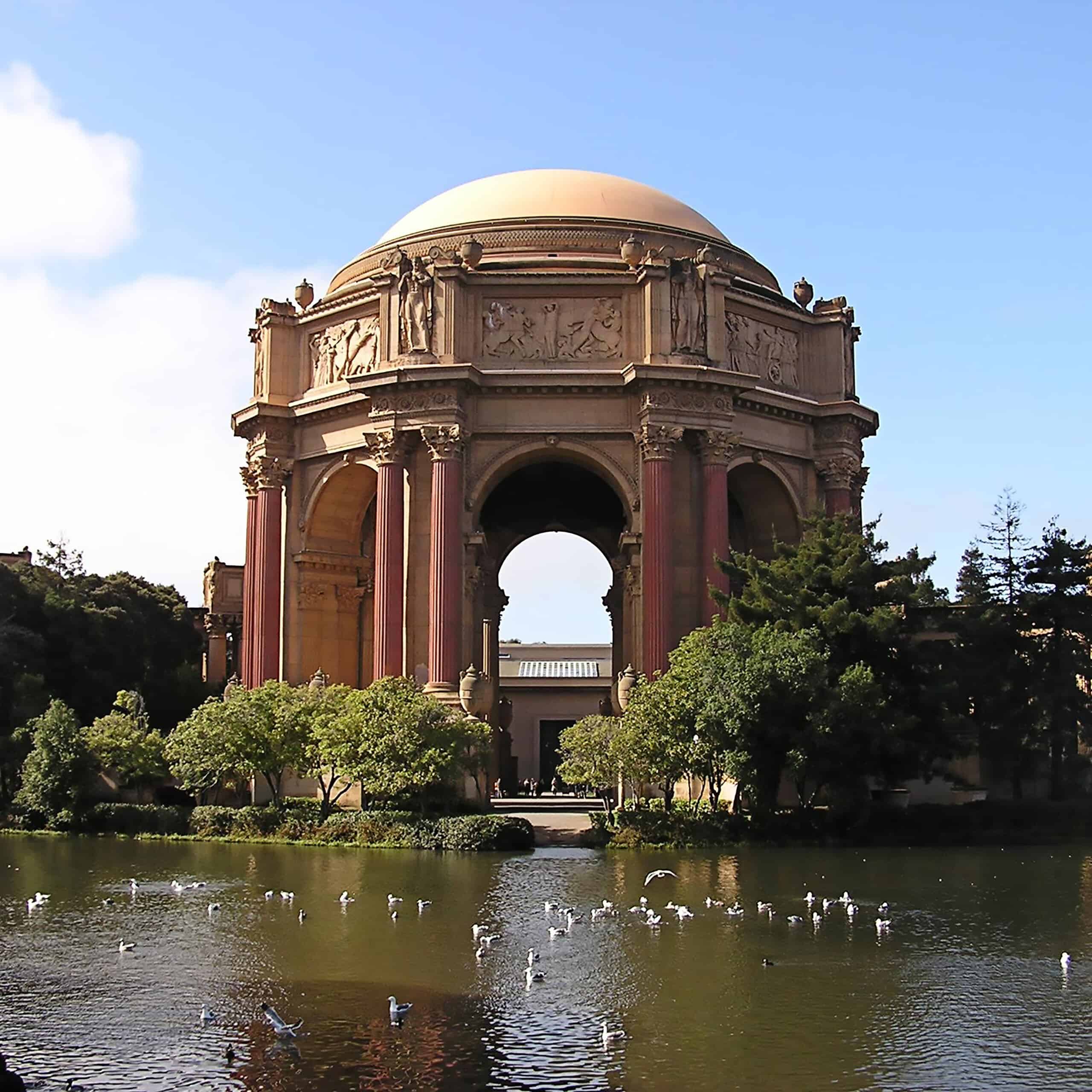
Palace of Fine Arts
3301 Lyon St.
Designed by the city’s favorite architect, Bernard Maybeck, for the Panama-Pacific International Exposition of 1915, the Palace of Fine Arts has since gone through a major restoration. The majesty of the rotunda is reflected in the adjoining lagoon.
© Juan Carlos Hernández

The Palace of The Legion of Honor
Lincoln Park, 34th Ave. & Clement St.
The Palace of the Legion of Honor provides a classic setting for a collection of Rodin sculptures. George Applegarth’s 1916 design is modeled on the building in Paris of the same name.
© Museums of the World
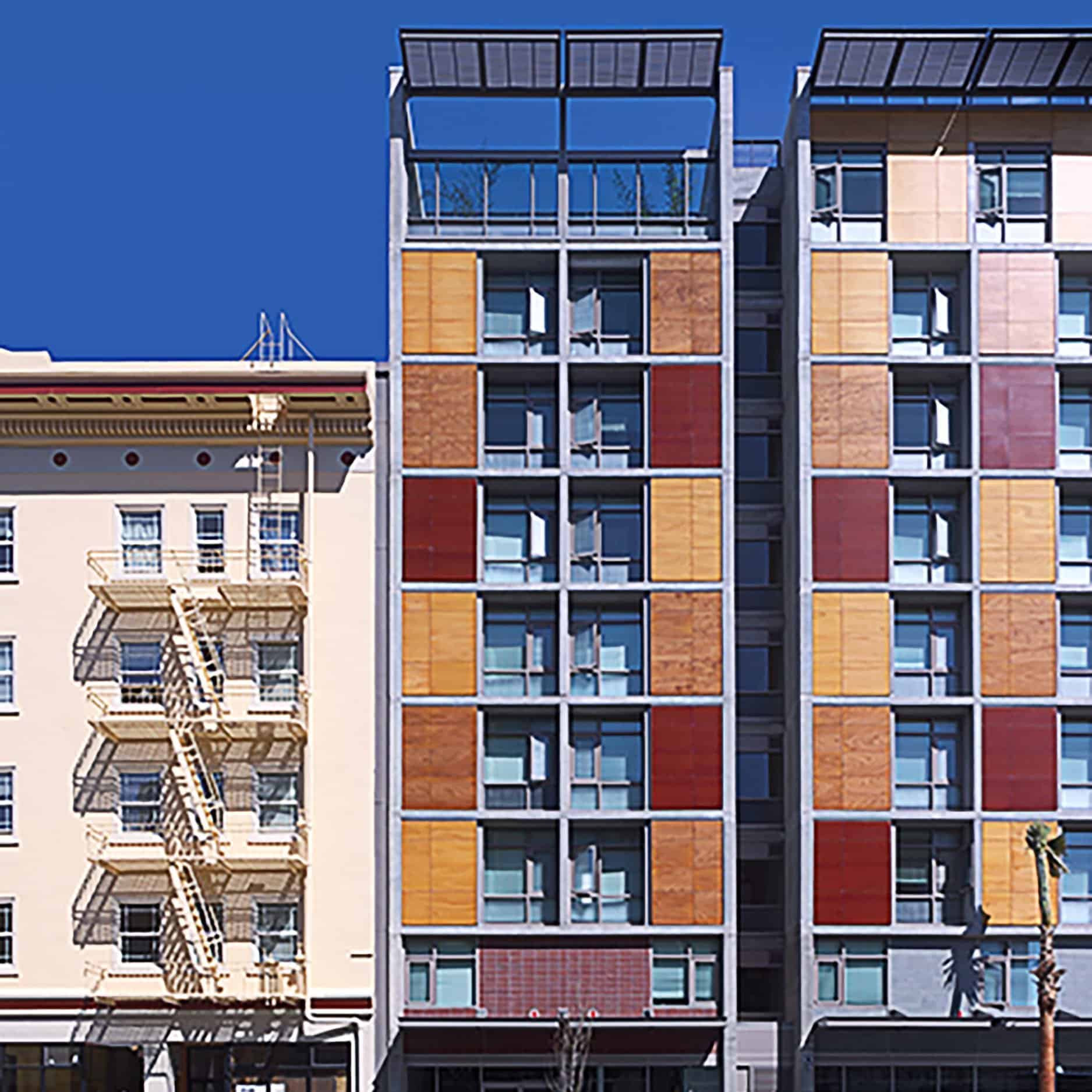
Plaza Apartments
Sixth and Howard Streets
A joint project by Leddy Maytum Stacy Architects and Paulett Taggart Architects, the 2006 mixed-use development was one of the city’s first forays into environmentally responsible housing. It provides 106 units for formerly homeless residents and sports a brightly colored exterior.
© Tim Griffith Architectural Photographer

Russell House
3778 Washington St.
With around bay window that cantilevers from the northwest corner, the minimalist home was designed by German architect Eric Mendelsohn in 1952. It is a striking example of Bay Area vernacular modernism.
© Bruce Damonte Photography

San Francisco Federal Building
90 Seventh St.
Morphosis/SmithGroup’s 2007 Federal Building represents the new environmental consciousness in commercial design. The stainless-steel sunshades floating over the glass walls allow the space to be naturally lit and ventilated.
© Tim Griffith Architectural Photographer
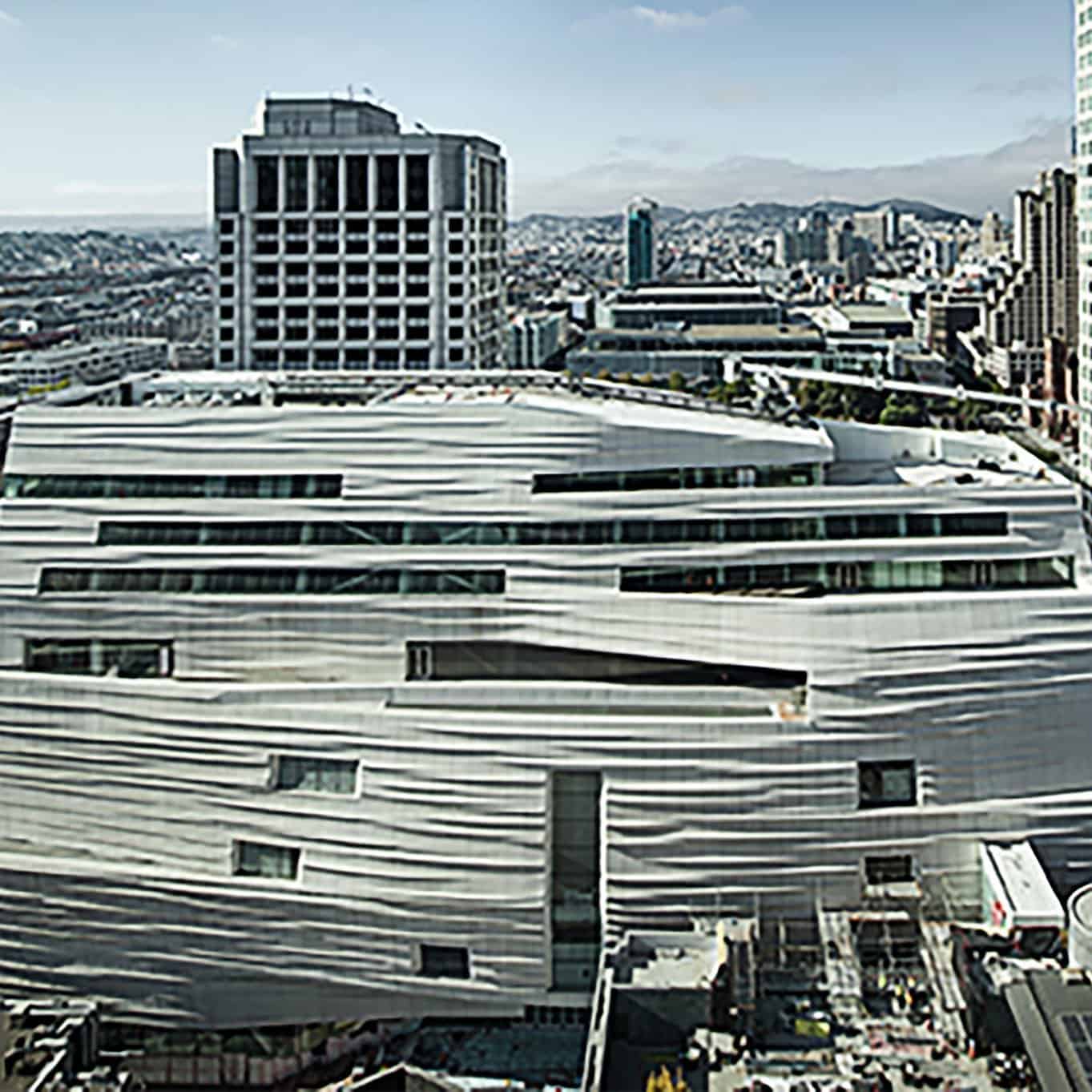
San Francisco Museum of Modern Art
151 Third St.
Snøhetta in collaboration with EHDD Architecture, completed a transformational expansion of SFMOMA that incorporates and renovates the museum’s existing Mario Botta–designed building, which debuted in 1995. The use of glass throughout the building, as well as the creation of two outdoor terraces and a new sculpture garden, further serves to open up the museum and its connection to the city.
© Henrik Kam Photography

St. Mary's Cathedral
1111 Gough St.
The Cathedral of Saint Mary of the Assumption was designed in 1971 by architects Pietro Belluschi, Pier Luigi Nervi and McSweeney, Ryan & Lee. The arches of the square structure curve to meet in a cross dramatically defined by thin strips of stained glass.
© Emily Hagopian Photography

Swedenborgian Church
2107 Lyon Street
One of California’s earliest Arts and Crafts buildings, the Congregation of the Swedenborgian Church of San Francisco has a madrone-beamed ceiling and handcrafted furnishings. It was created in 1894 by a group of notable area architects, including Bernard Maybeck.
© Joe Fletcher
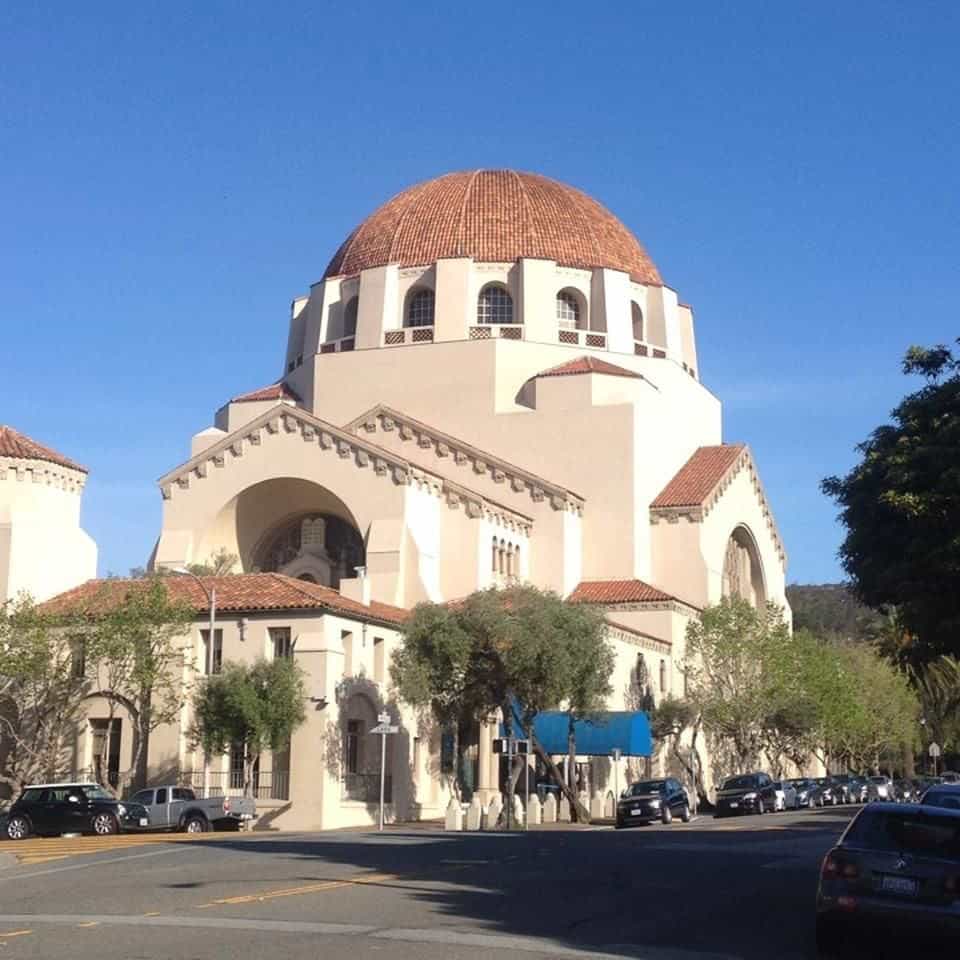
Temple Emanu-El
2 Lake St.
Designed by Arthur Brown, Jr., in 1926, this Byzantine-style domed temple was inspired by the Haggia Sophia in Istanbul. A bright blue ceiling decorated with painted motifs and contemporary stained glass windows by Mark Adams is part of the interior’s dramatic hues.
© Bruce Damonte Photography
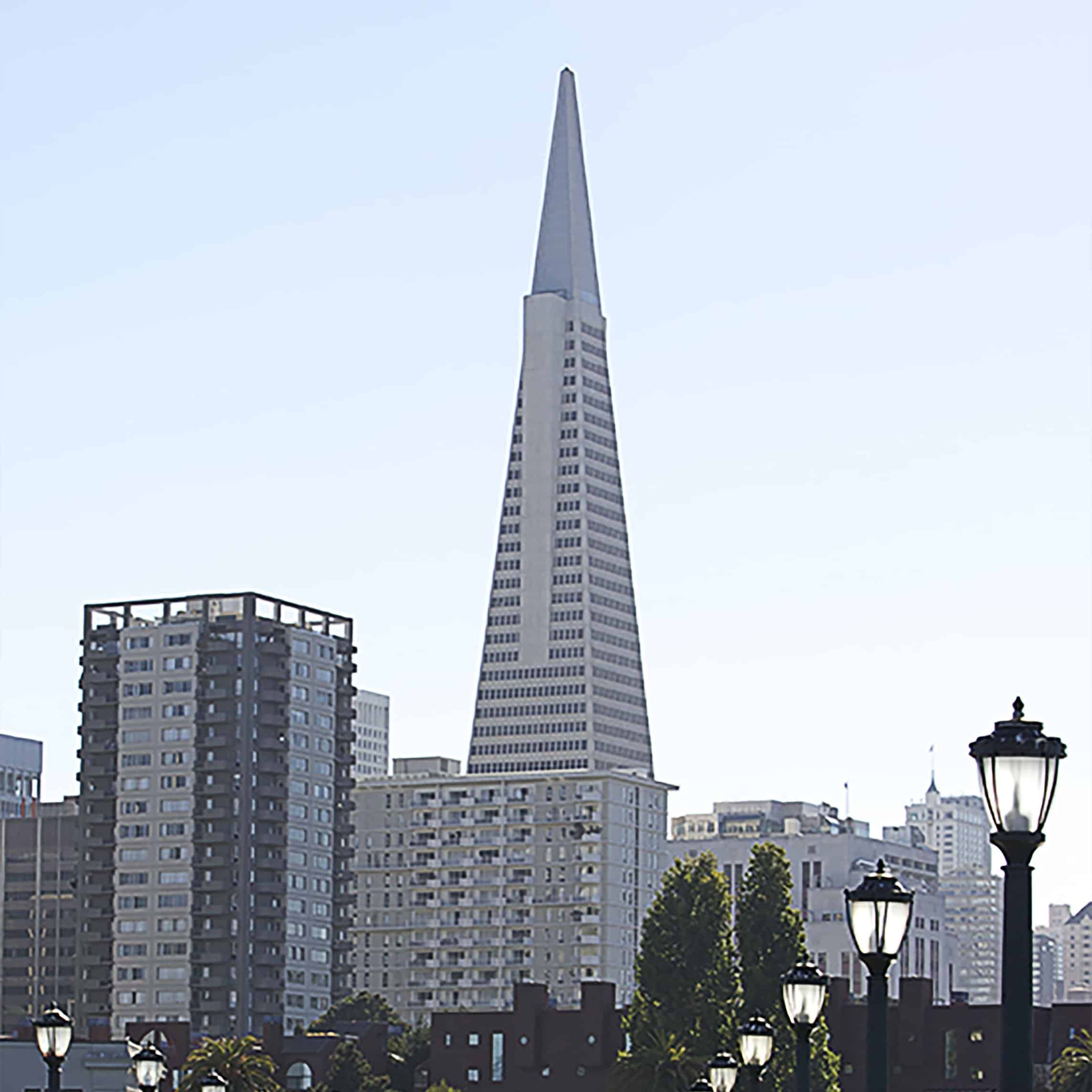
Transamerica Pyramid
600 Montgomery St.
The subject of some scorn at its inception, the pyramidal Transamerica Building designed by William Pereira in 1972 has become the city’s most iconic skyscraper. The structure’s top floor, the 48th, is the building’s smallest, at 2,025 square feet.
© San Francisco Travel Association, Scott Chernis

War Memorial Opera House And Veterans' Building
401 Van Ness Ave.
A matching pair of buildings, the War Memorial Opera House and Veterans’ Building were designed by Arthur Brown, Jr., and G. Albert Lansburgh in 1932. Along with City Hall, the structures represent an exceptional rendition of Beaux-Arts style.
© San Francisco Travel Association, Scott Chernis

Yerba Buena Center
Mission St. (between Third and Fourth Streets)
A revitalized South of Market arts district, Yerba Buena includes the Yerba Buena Center for the Arts (by Fumihiko Maki, 1993, pictured), the Novellus Theater (James Stewart Polshek & Partners, 1993) and the Metreon, a shopping and entertainment center (SMWM / Gary Handel + Associates, 1996).
© Joe Fletcher
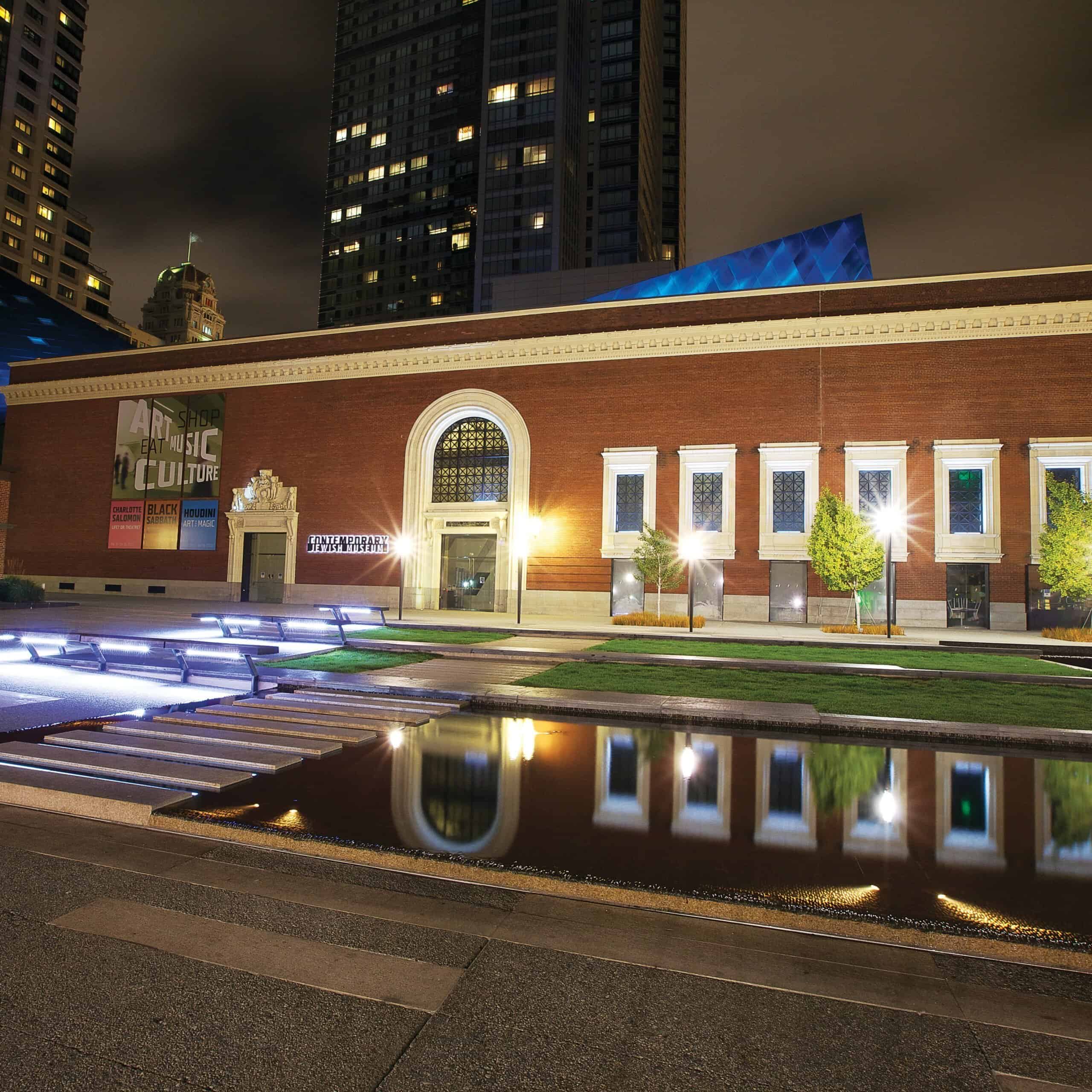
Contemporary Jewish Museum of San Francisco
736 Mission St.
Daniel Libeskind’s 2008 Contemporary Jewish Museum, designed in conjunction with WRNS Studio, is an example of adaptive reuse as well as modern architecture. Retaining the facade of the historic power substation (a Willis Polk design from 1907), Libeskind added a blue steel cube with daring angles.
© San Francisco Travel Association, Scott Chernis
